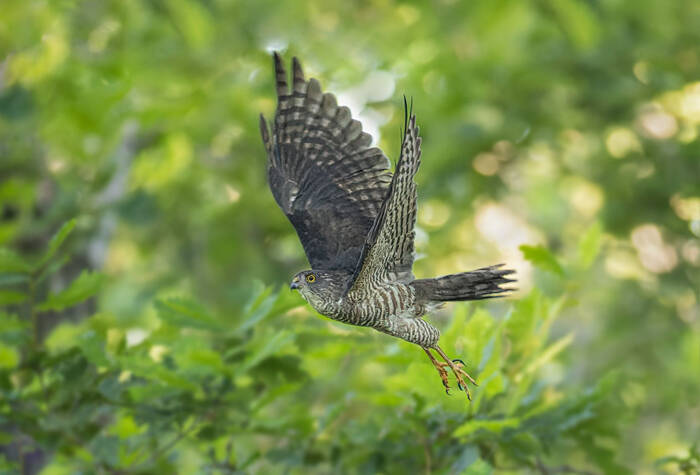Accipiter gularis
IUCN
LCBasic Information
Scientific classification
- name:Accipiter gularis
- Scientific Name:Accipiter gularis,Japanese Sparrowhawk
- Outline:Raptor
- Family:Falconiformes Accipitridae Hawk
Vital signs
- length:23-33cm
- Weight:75-173g
- lifetime:About 10-20 years
Feature
The black stripe in the center of the throat is relatively narrow, and the female bird is larger than the male bird.
Distribution and Habitat
Distributed in Brunei, Cambodia, China, India, Indonesia, Japan, the Democratic People's Republic of Korea, the Republic of Korea, the Lao People's Democratic Republic, Macau, Malaysia, Mongolia, Myanmar, the Philippines, the Russian Federation, Singapore, Thailand, Vietnam.
Wandering: Northern Mariana Islands.
Origin uncertain: Guam.
In China, it breeds in Heilongjiang, Jilin, northern Hebei and northeastern Inner Mongolia. It is also found to breed in Yunnan, Zhejiang, Gansu and other places. Some of them stay all year round, and some are summer migrants. During the migratory season, it is seen in the eastern part of China and the vast areas south of the Yangtze River. It is a winter migrant in Guangxi, Guizhou and other places.
It mainly inhabits mountain coniferous forests and mixed forests, and also appears in forest edges and sparse forests. It is a typical forest raptor. It is active during the day and likes to go in and out of streams and valleys in the fo
Appearance
The appearance and feather color are very similar to the Jayhawk, but the black stripe in the center of the throat is narrower and not as wide and thick as the Jayhawk; the coverts under the wings are white with gray spots, while the wing coverts of the Jayhawk are white and have gray spots. The undercovers are brown; in addition, the Japanese Jayhawk's armpit feathers are white with gray horizontal spots, while the Japanese Jayhawk's armpit feathers are brown with black horizontal spots.
The male Japanese Jayhawk has a crimson iris, while the female has a yellow iris. The mouth is slate blue with a black tip. The wax film is yellow. The feet are yellow and the claws are black.
Size measurements: weight ♂75-110g, ♀120-173g; body length ♂250-284mm, ♀292-338mm; bill peak ♂10-12mm, ♀11-14mm; wings ♂160-170mm , ♀183-198 mm; tail ♂118-130 mm, ♀138-154 mm; tarsometatarsus ♂44-53 mm, ♀46-55 mm. (Note: ♂ male; ♀ female)
Details
The Japanese Sparrowhawk, whose foreign name is Japanese Sparrowhawk, is a small raptor with three subspecies. The female bird is larger than the male bird. In the past, it was classified as the northern subspecies of the Jayhawk, but it is not only morphologically different from the Jayhawk, but also has many significant biological differences. Therefore, in recent years, most scholars believe that it is A separate species.

The Japanese Jayhawk's breeding season is from May to July. It often nests in dense mountain forests and forest edges. It especially likes to nest in tall trees near river valleys and streams in coniferous forests or coniferous broad-leaved mixed forests. The nest is also built on tall trees such as red pine and larch in the sparse forest at the edge of the forest. The nest is mainly composed of thin pine branches and other twigs. The outer edge of the nest is often woven with fresh pine branches with green leaves, and the inner pad is lined with pine needles and feathers. The nest is small and solid, in the shape of a round and thick dish or disk, with a height of 10-20 meters from the ground. Each clutch lays 5-6 eggs. The color of the eggs is light blue-white, with a few small purple-brown spots on the cover, especially dense at the outer end. The eggs are off-white after hatching. The parent birds have strong nest-protecting behavior during the incubation period. When they find someone entering the nest area, they often show an attacking posture or swoop over.
It is listed in the 2012 Red List of Endangered Species of the World Conservation Union (IUCN) ver3.1 - Least Concern (LC).
Listed as endangered species in CITES Appendix I of the Washington Convention.
It is listed as Level 2 in the "List of National Key Protected Wild Animals in China".
Protect wild animals and eliminate wild game.
Maintaining ecological balance is everyone’s responsibility!








